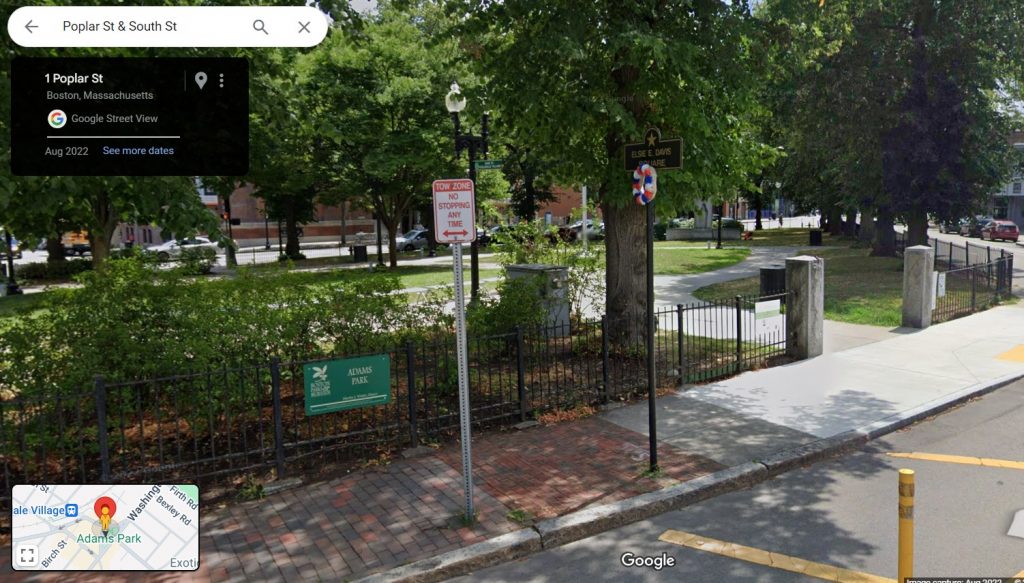A Peek Into Digitization
Posted September 30, 2024 by Aurora Daniel
As promised in my last post I’ll be sharing the work I’m doing this semester at the City of Boston Archives. I’m part of a grant funded project to digitize records related to Boston’s Heroes Squares, which are historical markers located on squares throughout the city to recognize and remember veterans from Boston who died while on active duty. This grant comes from the Massachusetts State Historical Records Advisory Board and was specifically designated for projects related to veterans history. The City of Boston Archives applied for it last year in order to cover the cost of paying a graduate-level intern to work on this project and hired me over the summer.
Thus far I’ve been scanning files, editing them, and creating PDFs to represent the dockets that either support or veto the creation of the different squares. By the time I finish I will have scanned over 1,100 dockets. Currently, I’m about a third of the way through scanning. Once that is complete I’ll be uploading all of this to the archive’s database and creating the metadata so that the records can be retrieved. Then this will be connected to the Heroes Squares database. The goal is that all of this information will be accessible when someone encounters a sign on the street via a QR code.
There will be some interesting data to compile and stories to research once the project is fully complete. For example, yesterday I scanned what I believe is the first square dedicated to a woman service member. It is for U.S. Army Staff Sergeant Elsie Davis who served during World War II and died during the Korean War. The sign is located near Adams Park in Roslindale at the corner of Poplar Street and South Street. While there isn’t much information about her time in service in the files that I’ve seen thus far it still sparks questions for me: How many of these squares are dedicated to women? Why do we still talk about those who have served in combat or during wartime as being exclusively men despite women’s inclusion in many of these memorialization projects? Finally, what can be done on the part of historians, archivists, and other public history professionals to change this narrative?

Screenshot from Google Maps of the Elsie E. Davis Square sign located near Adams park in Roslindale, MA
While it’s difficult to gauge how much the public will actually interact with these QR codes when they’re complete I still feel that this work is valuable. The information about the service members who died varies from docket to docket but for each one that I’ve scanned I’ve sat with them a bit. I think about these people, often young and enlisted personnel, and I’m reminded of those I used to work with who died while on active duty. How my life continues on with education, jobs, and moves, reaching milestones that they never will. How long will it take for them to be forgotten? Twenty, forty, eighty years? Is that what has happened with all of these service members that this project is dedicated to? With all of this in mind I make a point to picture the people behind these files and wonder how they would like to be remembered. Even if their loved ones have passed I want them to know that they mattered. If only a few people take the time to learn more about those whose memory the signs are dedicated to when they encounter them I will count that as a success. The stories will always be there when people are ready for them.
